The selection of compact pistols intended for concealed carry use is constantly expanding. Some options truly stand out above the rest and become the “top dogs” in their respective markets. All of the popular options out there are pretty easy to spot. One scroll through social media and it’s pretty apparent what guns made the cut. Today, let’s evaluate two pistols that have huge fanbases for good reason Sig Sauer vs. Smith & Wesson in this Sig P365 vs Shield analysis.  For context prior to diving deeper into this comparison, I own a Shield 9mm and have carried it for the last several years. I’m not trying to play favorites and intend to remain objective and give you a fair perspective on each. That said, you don’t carry a gun for several years without some level of affinity for it.
For context prior to diving deeper into this comparison, I own a Shield 9mm and have carried it for the last several years. I’m not trying to play favorites and intend to remain objective and give you a fair perspective on each. That said, you don’t carry a gun for several years without some level of affinity for it.
First Impressions: S&W Shield vs. Sig Sauer P365
After firing hundreds of rounds through the P365 and thousands through my Shield 9mm, I’ll just say that I feel like both of these pistols are premium CCW material. I would take either one out of the box and carry it with full faith that it would function when needed. Not only would I trust them both to function when needed, but they are also both relatively easy to carry. The fact that both of these are chambered in 9mm almost inherently makes both of these options popular.
S&W Shield 9mm: The Backstory
Smith and Wesson released the U.S. made Shield 9mm in 2012. It’s a striker-fired, single stack, concealed carry focused pistol. With a market value of approximately $300 at the time of this article being written – the Shield is very affordable. A Shield pistol comes with two different magazine sizes. One is slightly longer with a capacity of 8+1 and the second is a 7+1 flush fit. In my experience, the 8+1 magazine works just fine for appendix carry and I don’t really see the need for the 7+1 magazine for CCW if you are of average build. The gun really fits nicely against the body – thanks to its ultra slim design. The Shield handles recoil well for its size – though you may find other compact pistols easier to shoot accurately. I’ve noticed if you get outside the typical 10-15 yard CCW defensive range, other options seem to edge out the shield when shooting quickly. With practice, I would still consider it a very “shootable” pistol though. 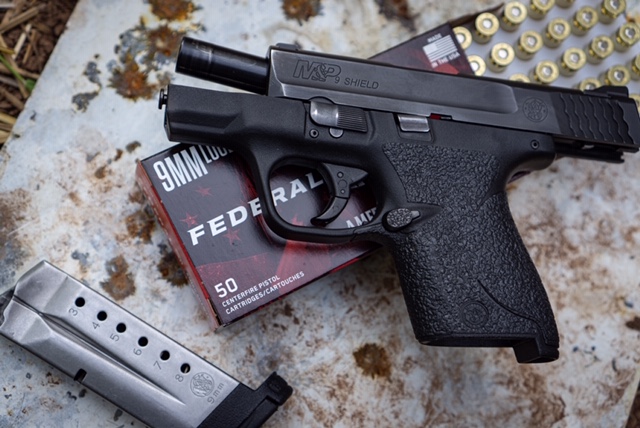
Sig Sauer P365
Sig Sauer released the American made P365 in 2018. The P365 is something in-between a single and double stack which allows it to hold a capacity of 10+1 in such a compact frame size. Advertised upon release as “the ultimate concealed carry pistol,” the Sig P365 is definitely something refreshing and unique in the market. A new P365 will set you back about $500. For that reason, some might not be willing to pull the trigger on this purchase. A close look at this pistol and shooting experience might just make you adjust your budget. Based on my experience, this pistol is well worth the coin. A 10+1 standard capacity and extremely compact design really help this pistol shine. I would argue that this pistol is the best blend of capacity and comfort in the CCW market. Sig brought a lot of good stuff to the table with this package – one range trip will convince most. 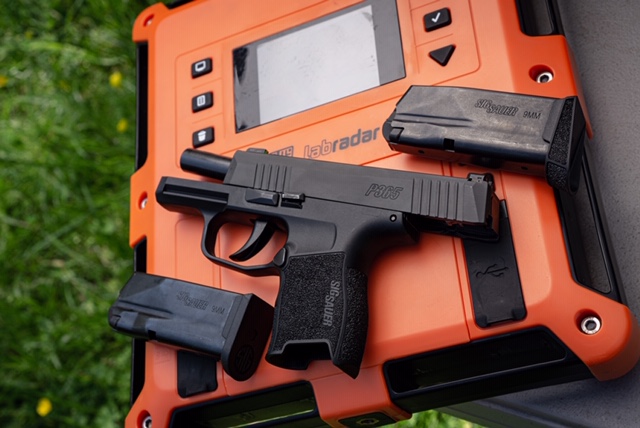
Sig P365 vs. Shield – Side by Side Specs
| Specification | S&W Shield 9mm | Sig P365 |
|---|---|---|
| Price | $300 | $499 |
| Weight | 20.8 ounces | 17.8 ounces |
| Barrel Length | 3.1" | 3.1" |
| Capacity | 8+1 | 10+1 |
| Width | .95" | 1" |
| Height | 4.5" | 4.3" |
| Total Length | 6.1" | 5.8" |
Frame Size Considerations
When considering a handgun for concealed carry, most of us are factoring the size of the pistol – at least to an extent. Both of these pistols are relatively compact and easy to conceal. Designed with the CCW market as their target customer, I would say that Sig and Smith and Wesson both hit the A zone. As someone who carries primarily in the appendix carry position, both of these pistols fit the bill well. You can conceal either of these pistols with very little effort in any weather. Based on the shorter grip of the P365, I would say it’s even easier to conceal than the Shield. For those with very small frames, this may be a selling-point. The trade-off in frame size between the P365 and Shield in my opinion would be the ease of grip purchase with the Shield. A shorter grip on the P365 means that some will find it harder to find a solid grip or draw from concealment.

Sig’s P365 with a 5.8″ barrel
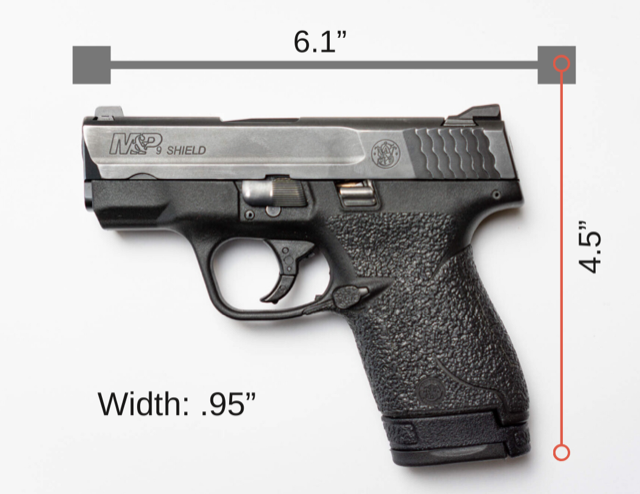
S&W’s 6.1″ barreled Shield
Shootability
The shorter grip of the P365 did seem to be slightly uncomfortable after shooting a hundred rounds or so in a relatively short time frame. Even with the larger sized magazine, the inside corner of the magazine dug into my palm while firing. This is a case by case experience based on hand size and grip obviously.
Overall, the P365 was still a comfortable pistol to shoot, considering the size. This issue wouldn’t stop me from choosing this pistol as a concealed carry weapon, it just wouldn’t be my first pick to shoot all day at the range. In an ironic twist, the smaller frame P365 pistol has the capacity advantage with a 10+1 compared to the 8+1 from the Shield. After several hours of shooting the P365 and Shield, I noticed surprisingly smooth recoil management in the P365. The Shield handles recoil well in my opinion but the P365 really seems to have a more balanced feel when firing. I used 3 types of 9mm ammunition while test firing these pistols – to include self-defense ammunition. Neither pistol had any issues cycling ammunition during my testing.
Impact on Muzzle Velocity
These handguns are both chambered in 9mm – as is the case with most popular CCW pistols on the market. The topic is one that often leads to heated “conversations” but most would agree that 9×19 is a solid choice for a concealed carry pistol.
The ammunition industry is loaded with high quality self defense rounds in 9mm. One of those high quality rounds that I tested out of both pistols is the 124 GR Federal Premium HST round. Federal Premium advertises a muzzle velocity of 1,150 feet per second out of a 4″ barrel. I knew that with the P365 and Shield having only 3.1″ barrels, I would see slightly different results. A LabRadar Chronograph system was used to track 5 of the 124 GR HST rounds through each pistol. The slightly lower velocity was expected and honestly not much different from the 4″ barrel results advertised.
- Shield: 1,061 fps
- P365: 1,072 fps
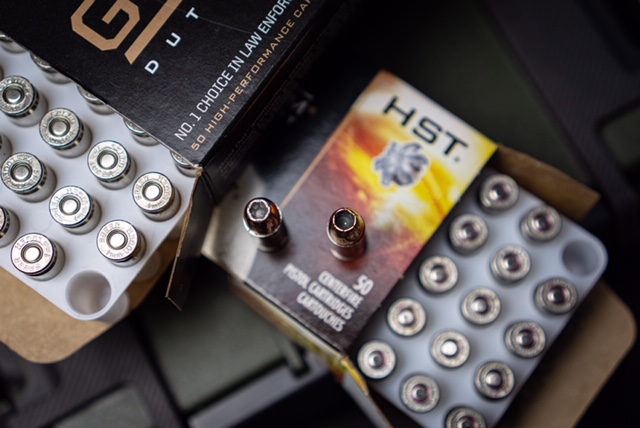
Trigger Experience: S&W Shield vs. Sig P365
Taking the trigger into consideration is common practice – especially when choosing a compact pistol for concealed carry. For context on my experience with both of these pistols, I have pretty much only used stock triggers on handguns. I know that for the Shield in particular, there are some popular aftermarket options. To give you an idea of trigger pull weight, I conducted 10 pull tests and averaged the results.
- S&W Shield: 5 lbs. 12 oz
- Sig P365: 4 lbs. 10 oz
S&W Shield Trigger
I truthfully feel that this is my main complaint with the Shield. The trigger feels and acts a little “spongy” in my experience but does have nice crisp reset. Maybe it’s because I’ve owned one for so long, but I do feel like it is fairly predictable. Purchasing an aftermarket trigger from a place like Apex Tactical has definitely crossed my mind.
The difference in pull weight with the Shield was apparent to me with a much heavier feeling trigger. I don’t think it’s really all that much of an issue but definitely something to consider when comparing these two pistols. I should point out that Smith & Wesson has released a Shield 2.0 with a supposedly upgraded trigger – I just haven’t experienced it yet.
Sig P365 Trigger
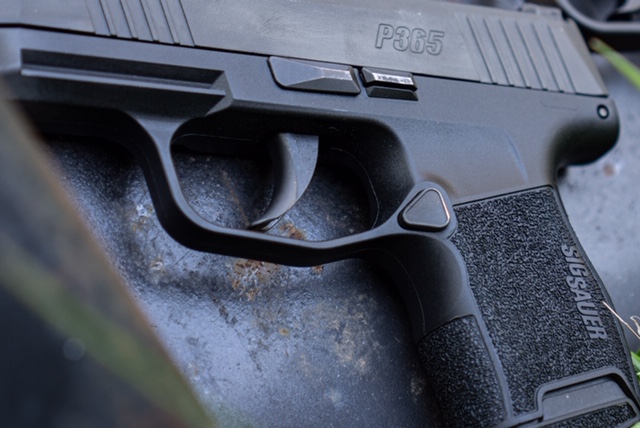
As much as the trigger on the Shield is a sore spot in my eyes, the trigger on the P365 is a highlight. This trigger is very smooth and easy to shoot. With a predictable break and crisp reset, I had no complaints. I was able to shoot the P365 relatively accurately and quickly for a compact pistol. If I had to guess, it’s because of the quality trigger. A tested trigger weight of under 5 lbs. really felt nice. Not only was the P365 trigger lightweight feeling, it was very comfortable to shoot extensively. The rounded off and smooth design really contrasted against some of the other triggers on the market. I give the P365 the win in the trigger category for sure.
Sights: Target Acquisition
All it takes is about 10 seconds of holding each pistol and the winner in this category is apparent. Sights are an important aspect of any gun but especially handguns. While not necessarily a deal breaker, it is nice to have good sights already on a pistol from the factory. This holds true to a greater extent when you are spending the kind of money it takes to own a P365.
Shield Sights On Target P365 Sights On Target
S&W Shield Sights
The factory sights on a S&W Shield are decent in my opinion but not great. As you can probably tell from the above photo, I blacked out my rear sights to help the front sight contrast more. Finding the target with the Shield sights takes some getting used to. It would most likely be worth the investment to pick up some aftermarket night sights if you choose the Shield as your CCW. Coming back on target during rapid fire can be tricky if you are’t familiar already with the Shield sights – even in daylight.
Sig P365 Sights
The price tag again explains itself with the factory XRAY3 Day/Night Sights from Sig. These sights really performed well in my experience. Target acquisition even while firing quickly was simple and efficient. Pairing the smooth trigger with these sights lead to fairly accurate shooting for a compact pistol.
Shooting Experience And Functionality
As CCW intended pistols, effective and efficient operation is essential. When your factoring in the possibility of having to use a pistol in a life or death situation, reliability is imperative.
From my experience with both pistols, I would trust either in a self-defense capacity. The ease of use will obviously depend on hand size but all of the features were simple to access for me. Both have well designed and efficient magazine releases although the Shield does not have a reversible release. The P365 does have a reversible magazine release and for that reason will be attractive to left handed shooters. Shooting either pistol is honestly a fairly comfortable experience for the class they are in. As touched on earlier, the balance of the P365 does seem to edge the Shield and lead to flatter shooting. All things considered, both are excellent shooters and worthy of concealed carry use. I highly encourage you to test out both for yourself. 
Final Thoughts: S&W Shield vs. Sig P365
The compact pistol market is obviously saturated pretty well with options. Of all the options, reliable and well constructed pistols like the S&W Shield and Sig P365 stand out and deserve consideration. Ease of concealment and operation make both of these pistols worthy of the popularity from my perspective. The difference between the two is ultimately in the details. With a fairly large price gap, the Shield will be a great budget friendly option. For those wanting a more finished and tuned option, the P365 just may be the route to take.

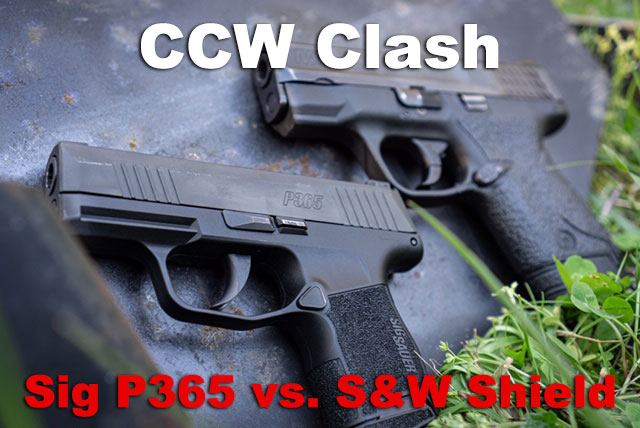
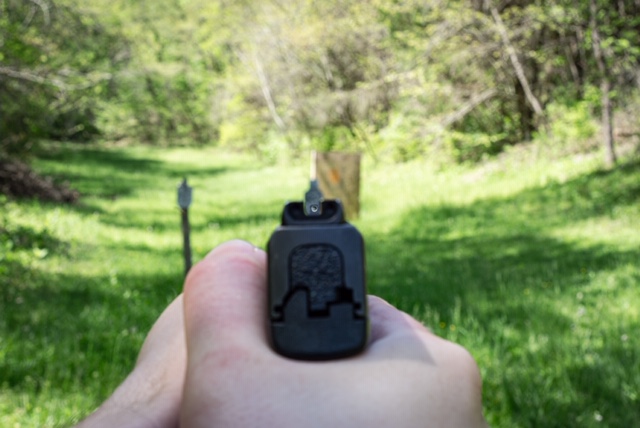
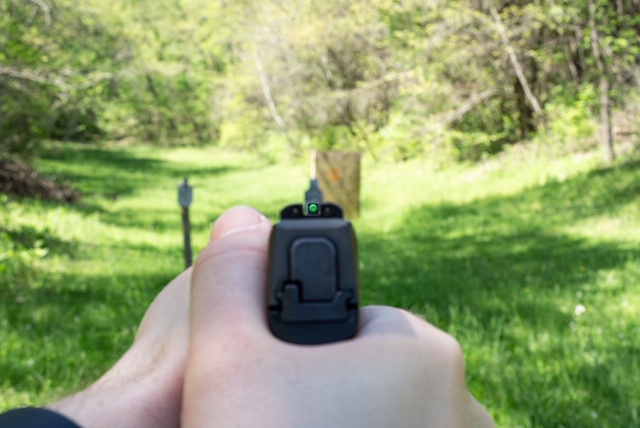
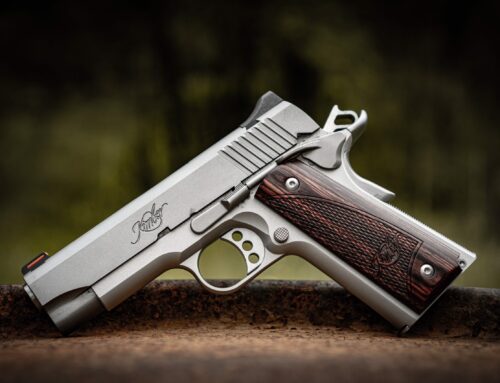
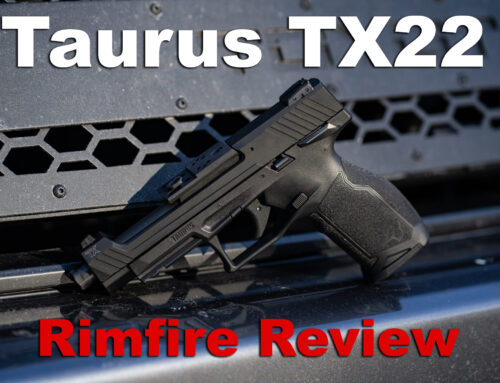

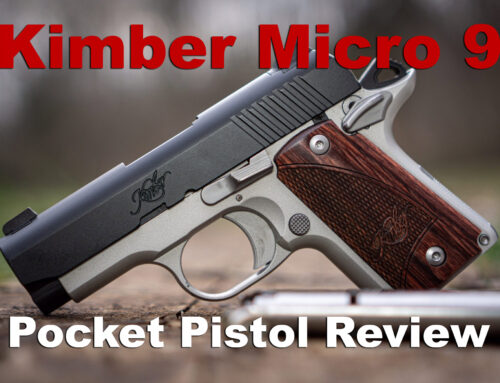
Nice review but a comparison using the Performance Center tuned Shield would be more appropriate. I have that gun and the trigger is great as are the sights. Prices are comparable between the S&W and Sig. I am a big fan of Sig also and have friends with 365s and they are very happy with the gun.
Fair point about the Performance Center tuned Shield Bill – we tried to approach this with the most popular version of each pistol. (Though, you’re right – the Performance Center Shield is closer in terms of price and does put a stronger foot forward for S&W than the base model Shield that sells so well.)
It sounds like you are comparing the 1.0 Shield to a more recent Sig. Maybe a better comparison would be a 2.0 Shield. If you wanted to add a third gun, then do the Performance Center Shield. I find the Shield to be soft shooting in 9mm and .45 acp. How does this compare with the SIG specifically, I wasn’t sure from this article.
Not a fan of blackout sights I had on my G43 Glock. Not a fan of 3 dots either (I have a shield 2.0 in 45 acp). I prefer ball and post like my Sig P226. Shield 2.0 grip with stand flush mag and grip were tight and able to get pinky on grip – good shooter. I picked up the P365 at the range and just don’t like a dangling pinky. While the Sig 365 sights may be better than other blackout, I’ve not shot it. I would like to love the P365 I may have to look at the 365X instead.